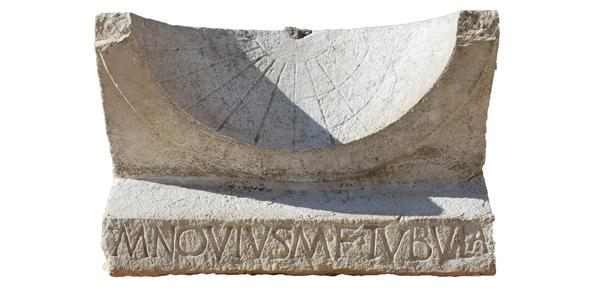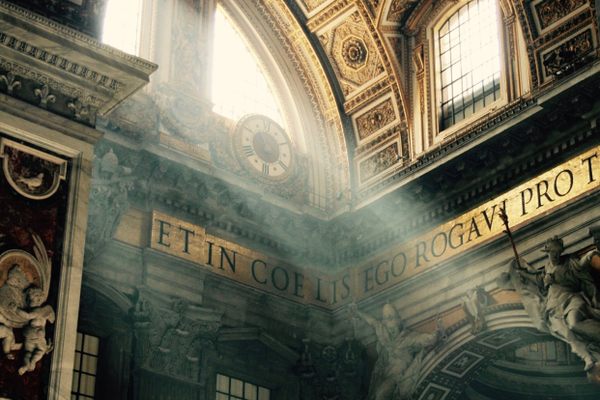Found: A Celebratory Roman Sundial, Two Millennia Old
A tribune of the people is still celebrating his electoral victory.

We don’t know precisely who Marcus Novius Tubula was. His identity is lost to the mists of history. But we do know that, around 2,000 years ago, he won an election, and he was really, really pleased about it. He was so pleased, in fact, that he spent his own money on a celebratory sundial. This victory monument lauded his election win as tribunus plebis—a tribune of the people, the first office of the Roman state open to the plebs, or commoners.
The glorious victory was nearly forgotten, until archaeologists from the University of Cambridge discovered the sundial commemorating it 50 miles south of Rome, at Interamna Lirenas, the site of a Roman town occupied from the fourth century B.C. through the sixth century A.D. Carved from limestone, with a concave face, the personal trophy has 11 hour lines engraved into it. At one time it had a long iron needle, which cast a shadow onto the pale stone to mark off the hours. “The sundial would have represented his way of celebrating his election in his own hometown,” archaeologist Alessandro Laurano told National Geographic. “People looking at it to check the time would have been reminded of Tubula’s success.”
The sundial was found with its face to the ground by Cambridge students working on the site, in the entrance to a theater down a side street. It’s believed that its original location was probably somewhere far more prominent—in the forum, say, on top of a pillar. “Less than a hundred examples of this specific type of sundial have survived and of those, only a handful bear any kind of inscription at all—so this really is a special find,” Launaro said, in a statement. Marcus Novius Tubula would probably be thrilled to learn people are still happy about his illustrious win.













Follow us on Twitter to get the latest on the world's hidden wonders.
Like us on Facebook to get the latest on the world's hidden wonders.
Follow us on Twitter Like us on Facebook